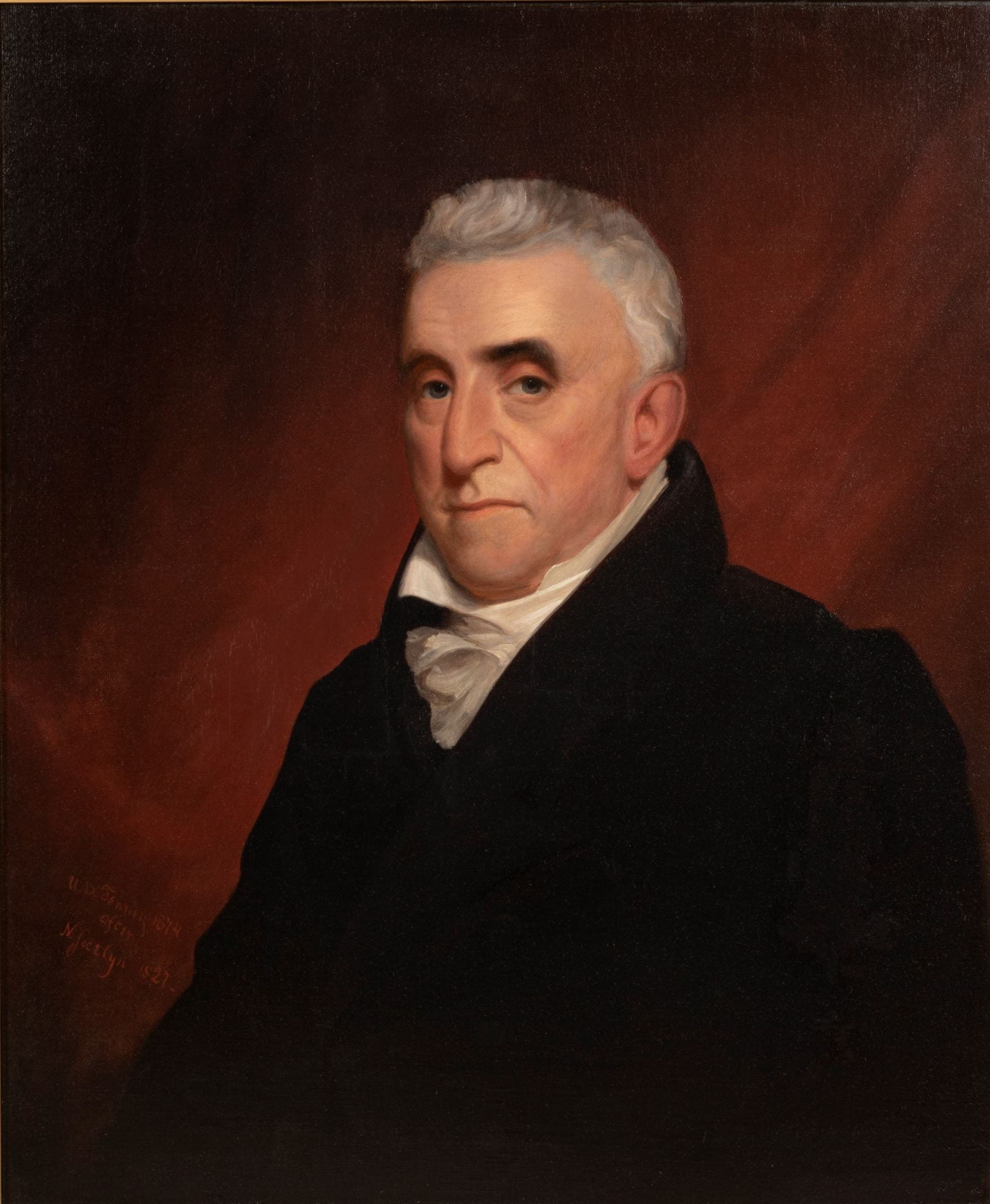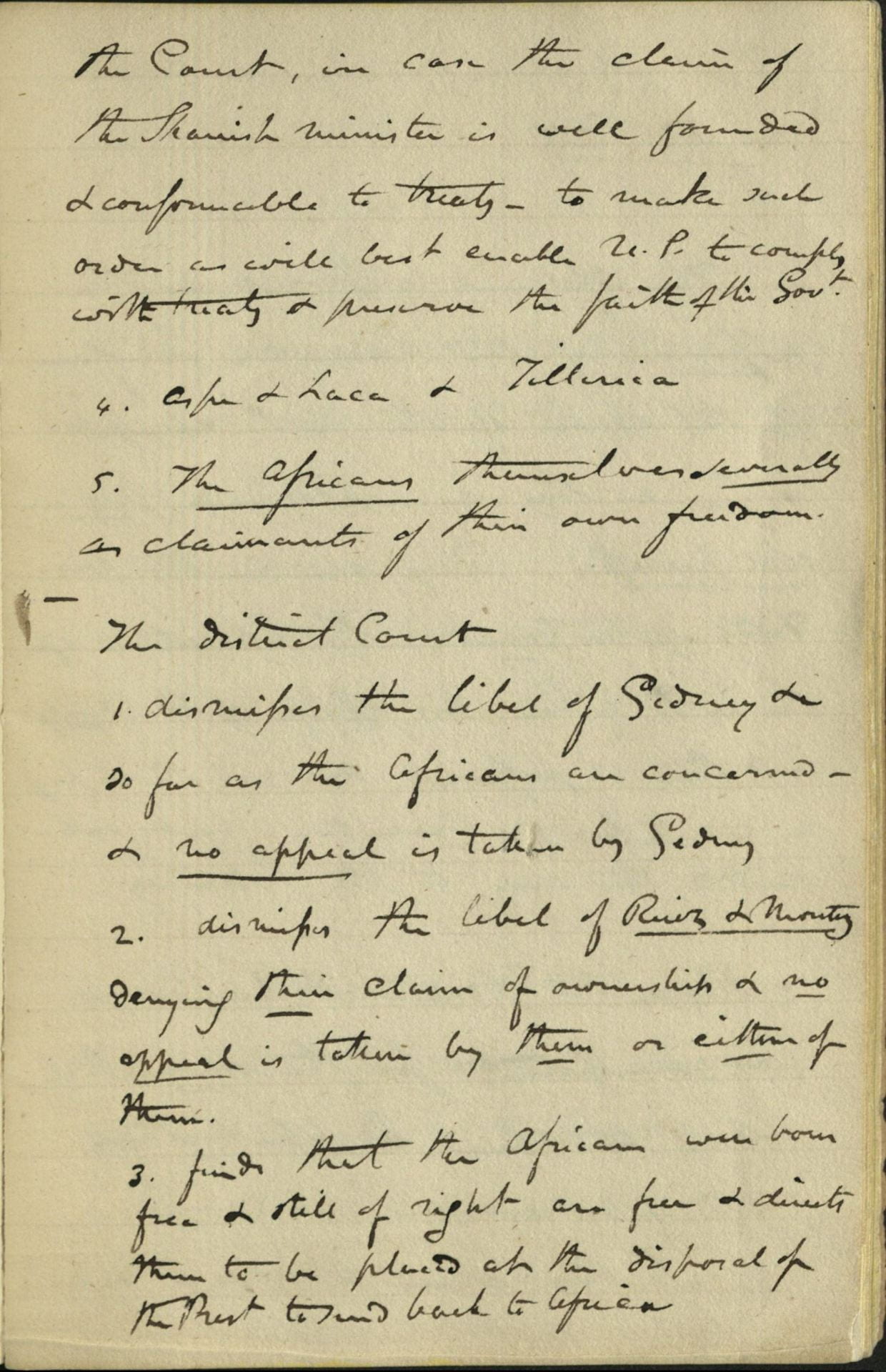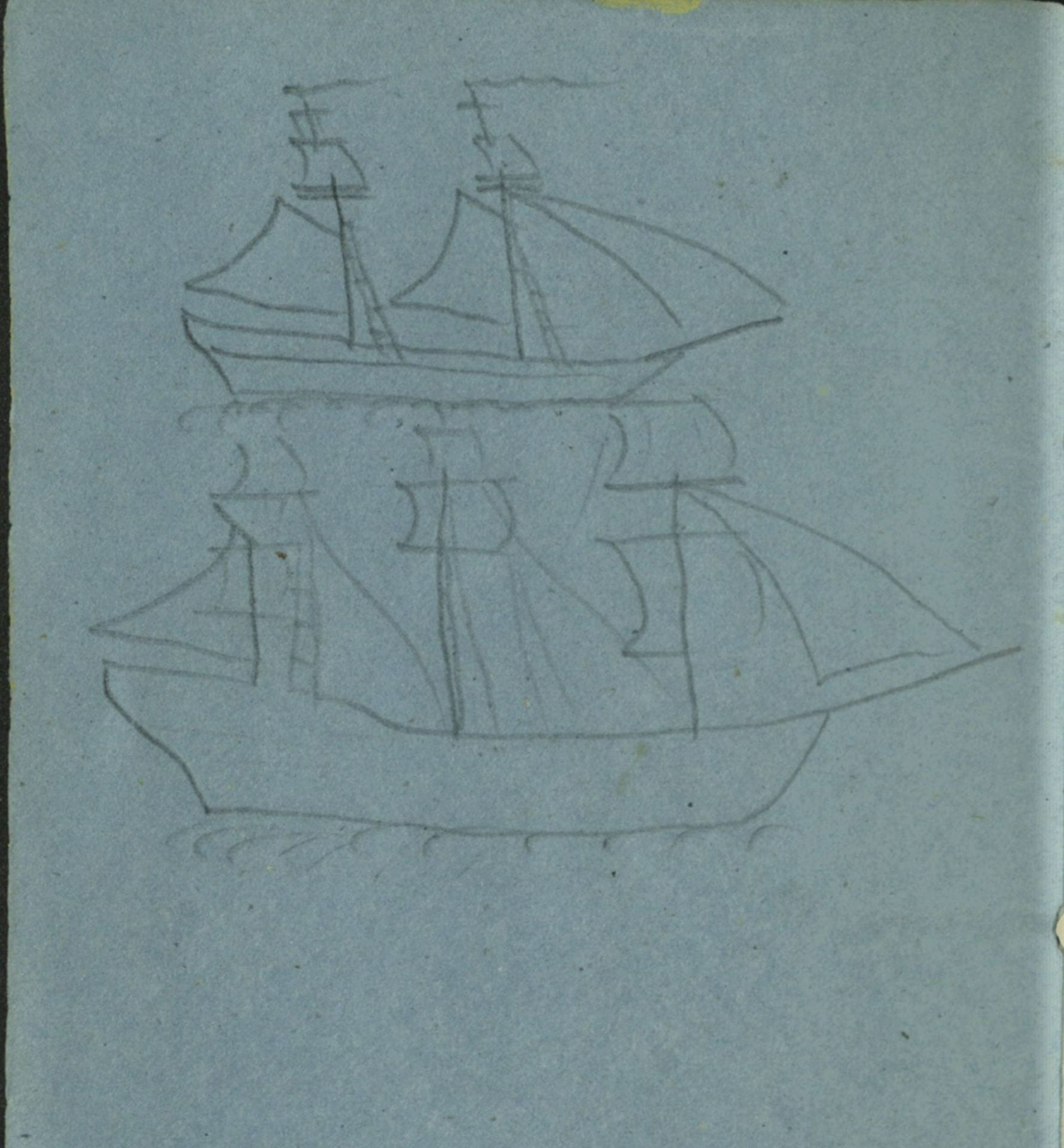Race, Slavery, & the Founders of Yale Law School
An exhibition at the Lillian Goldman Law Library, Yale Law School
Wednesday, September 28 – Wednesday, December 21, 2022
Extended through Wednesday, March 1, 2023
Foreword
In 1824, the Yale College catalog included the names of some of the students of the private law academy established in New Haven by Seth Perkins Staples, B.A. 1797, and later overseen by Samuel Hitchcock, B.A. 1809, and David Daggett, B.A. 1783. This moment marks one of the earliest associations of the New Haven law school with Yale College, a relationship that was later formalized by the establishment of Yale Law School.
What was the role of slavery in the lives, work, and law instruction of the founders of the Yale Law School? This exhibition represents only one of many possible responses, as a contribution to a broader discussion of this question. It takes as its point of entry the founders’ involvement in two of the formative law cases relating to slavery and race in antebellum America: in 1831, the trial of Prudence Crandall for admitting young Black girls as students in her Connecticut school; and in 1839–41, the trial of the West African men and children, victims of an illegal slave trade, who had seized control of their transport ship, the Spanish L’Amistad.
These two cases were situated within the New Haven and New England law communities and against a broader national context. The same decade that saw the Prudence Crandall and Amistad cases also brought the fierce opposition by Daggett, Hitchcock, and other white New Haven eminences to the establishment of a “Negro College.” In 1833, the “Black Law” prohibited the teaching of any Black student not resident in a Connecticut town without the town’s permission. Years later, in 1857, Daggett’s ruling in the Prudence Crandall case would be prominently cited as a precedent in the Dred Scott v. Sandford decision.
In following the work of Daggett, Staples, and Hitchcock through these two cases and their consequences, the exhibition makes visible the ways in which white abolitionist and pro-slavery advocates worked with and alongside each other within a law community and within a world informed by racism and white supremacy. Drawing on original documents and contemporary publications, the exhibition traces the work of David Daggett, Seth Perkins Staples, and Samuel Hitchcock and their long influence on American law through the twentieth century.
About the Exhibit & Acknowledgments
In 2021, Yale Law Dean and Sol & Lillian Goldman Professor of Law Heather Gerken invited the Lillian Goldman Law Library to curate this exhibit, as one contribution to the University’s ongoing project of the Yale & Slavery Working Group, convened by President Salovey in October 2020. The exhibit draws on support and scholarship from many contributors before this, including former Yale Law Librarian and Professor of Law Teresa Miguel Stearns (U. Arizona), former Dean and Sterling Professor of International Law Harold Koh (Yale Law), Sterling Professor of Law and Legal History John Langbein (Yale Law), and many others. For their help with this exhibit, we would like to offer particular thanks to Michael Morand (Beinecke Library), Allen H. Duffy Class of 1960 Professor of Law John Witt (Yale Law), and J. Skelly Wright Professor of Law James Forman (Yale Law). We also thank Dean Gerken and Yale Law Librarian and Professor of Law Femi Cadmus for their support of the project.
Kathryn James
Fred Shapiro
Lillian Goldman Law Library, Yale Law School
September 28, 2022
A Note from Dean Heather K. Gerken
During the first year of my deanship, I asked researchers at the Lillian Goldman Law Library to examine the role of slavery and race in the lives and work of the founders of Yale Law School. For the next two years, they worked alongside Professors John Witt and James Forman as well as a group of student volunteers. When President Peter Salovey initiated a University-wide project through the Yale and Slavery Working Group in the summer of 2020, we immediately shared our research with the University and joined the University’s process. Last year, a conference titled “Yale and Slavery in Historical Perspective,” hosted by the Gilder Lehrman Center for the Study of Slavery, Resistance, and Abolition, kicked off a University-wide discussion.
The Law Library research is now available through a new exhibit at the Law Library titled “Race, Slavery, and the Founders of Yale Law School.” I am pleased that our community will be able to learn more directly from the co-curators, Rare Book Librarian Kathryn James and Associate Director for Collections and Special Projects Fred Shapiro, as well as Law Librarian and Professor of Law Femi Cadmus, through a series of events planned by the Library.
The research at the center of this exhibit takes a comprehensive view of our past so that we can be clear-eyed in how we shape our future. If we are to pursue our mission of training the next generation of leaders in the legal profession, we must take into account the role that racism and oppression have played in our nation’s history and the history of this Law School. As participants in the University-wide process, we plan to continue this conversation across the next year as the University community reckons with its past and pushes forward a more equitable future. It is my hope that this exhibit and the broader University-wide initiative will give all members of our community an opportunity to reflect and take part in this important dialogue.
Sincerely,
Heather K. Gerken
Yale Law School
September 28, 2022
Image Gallery















